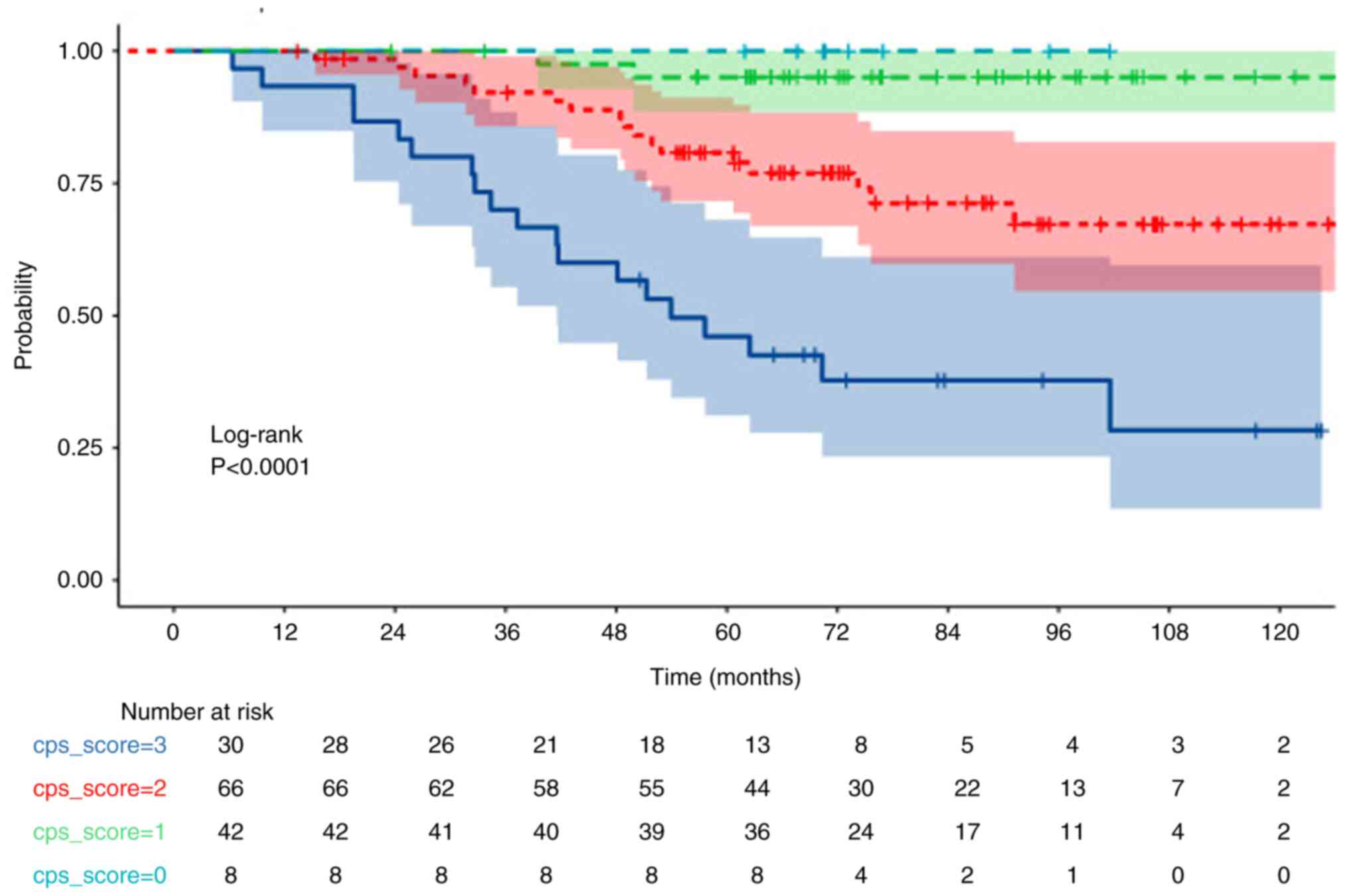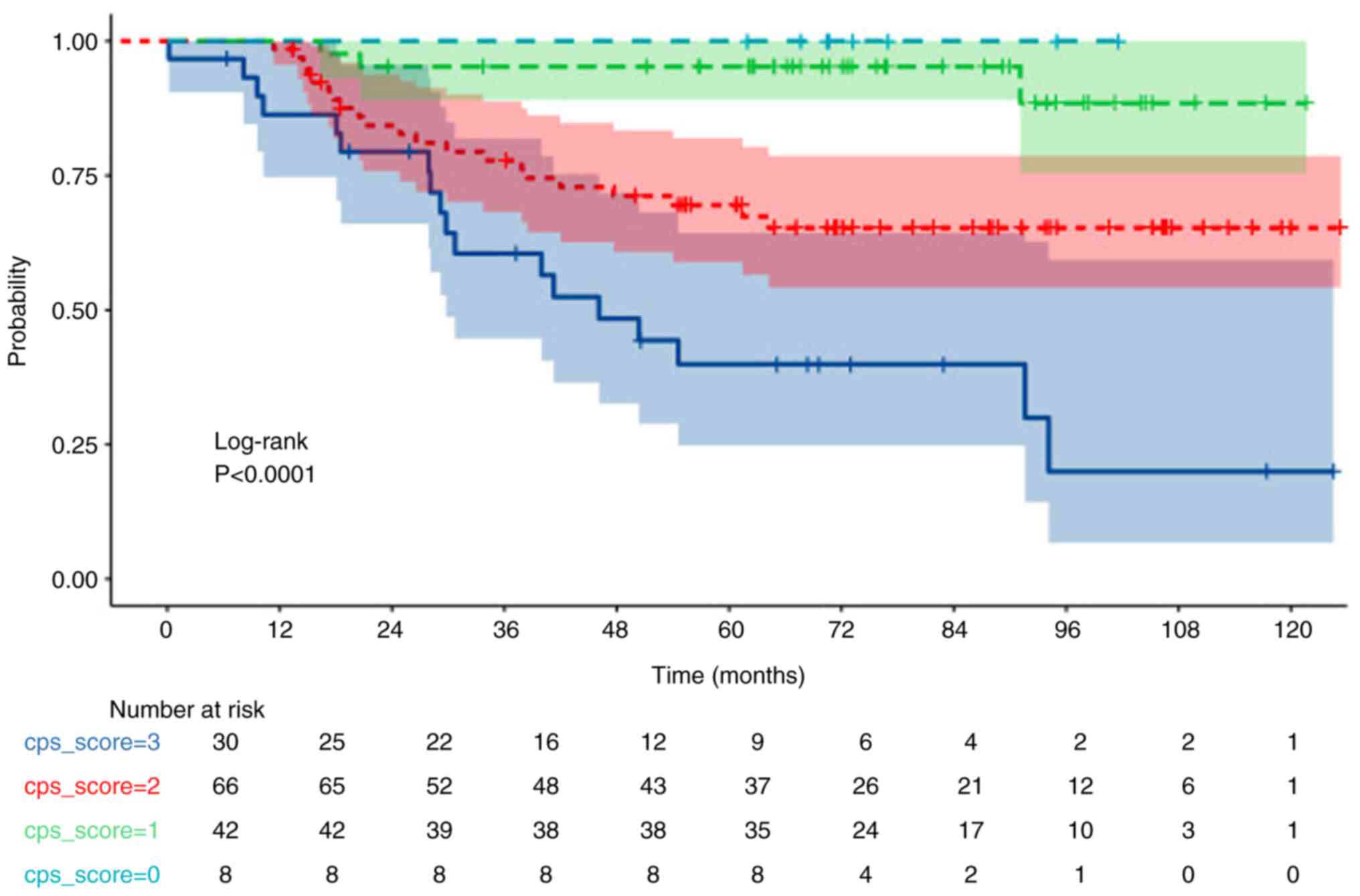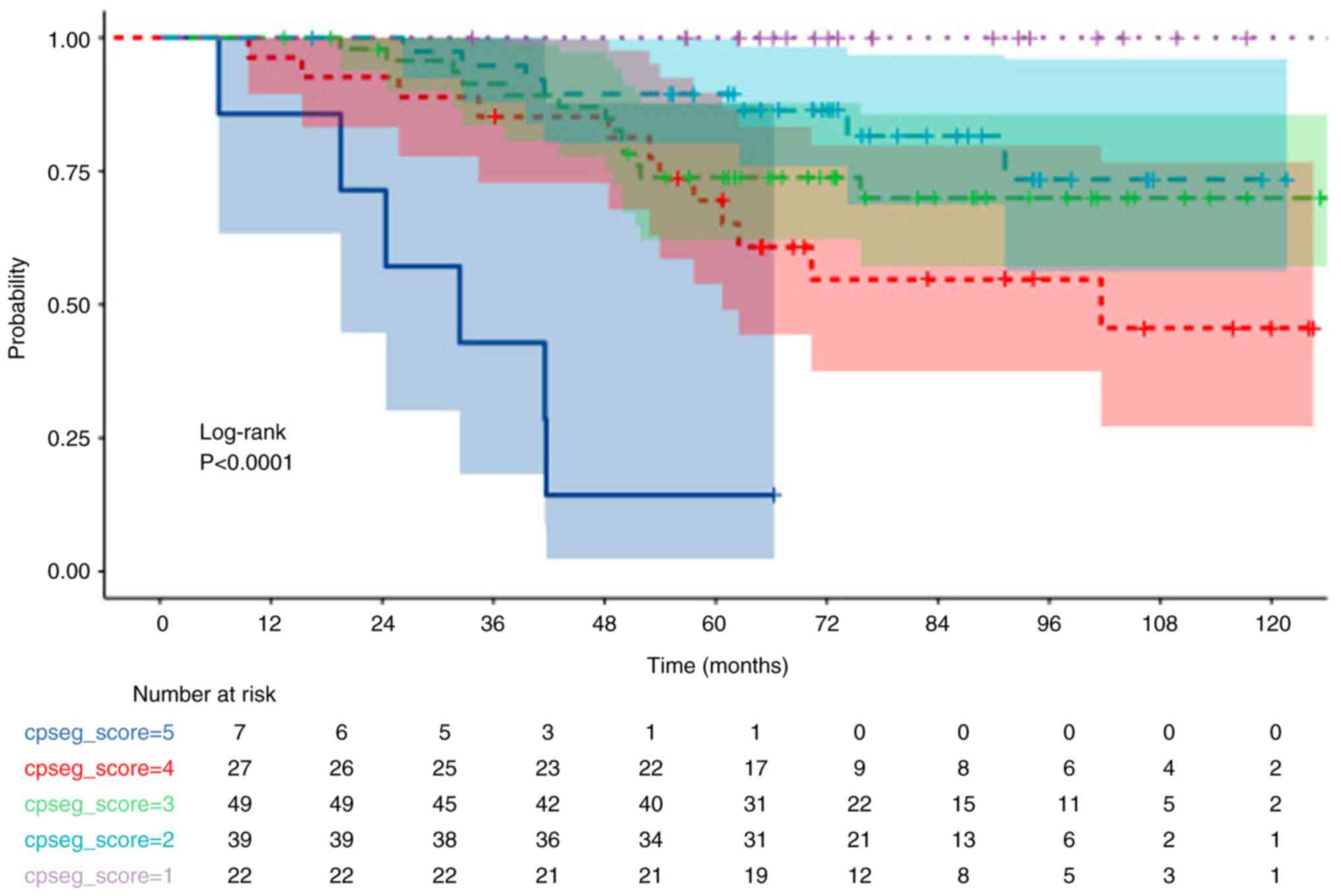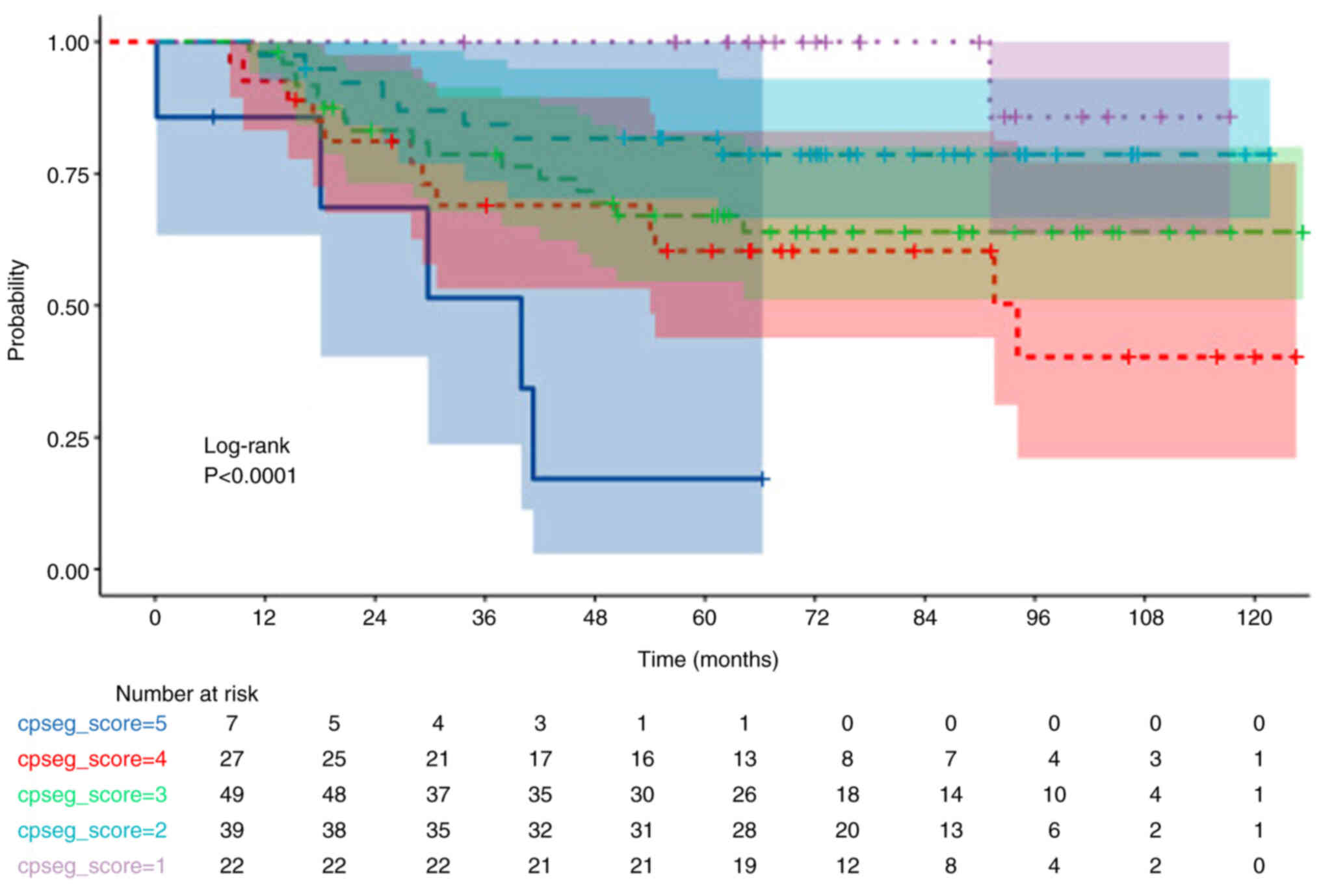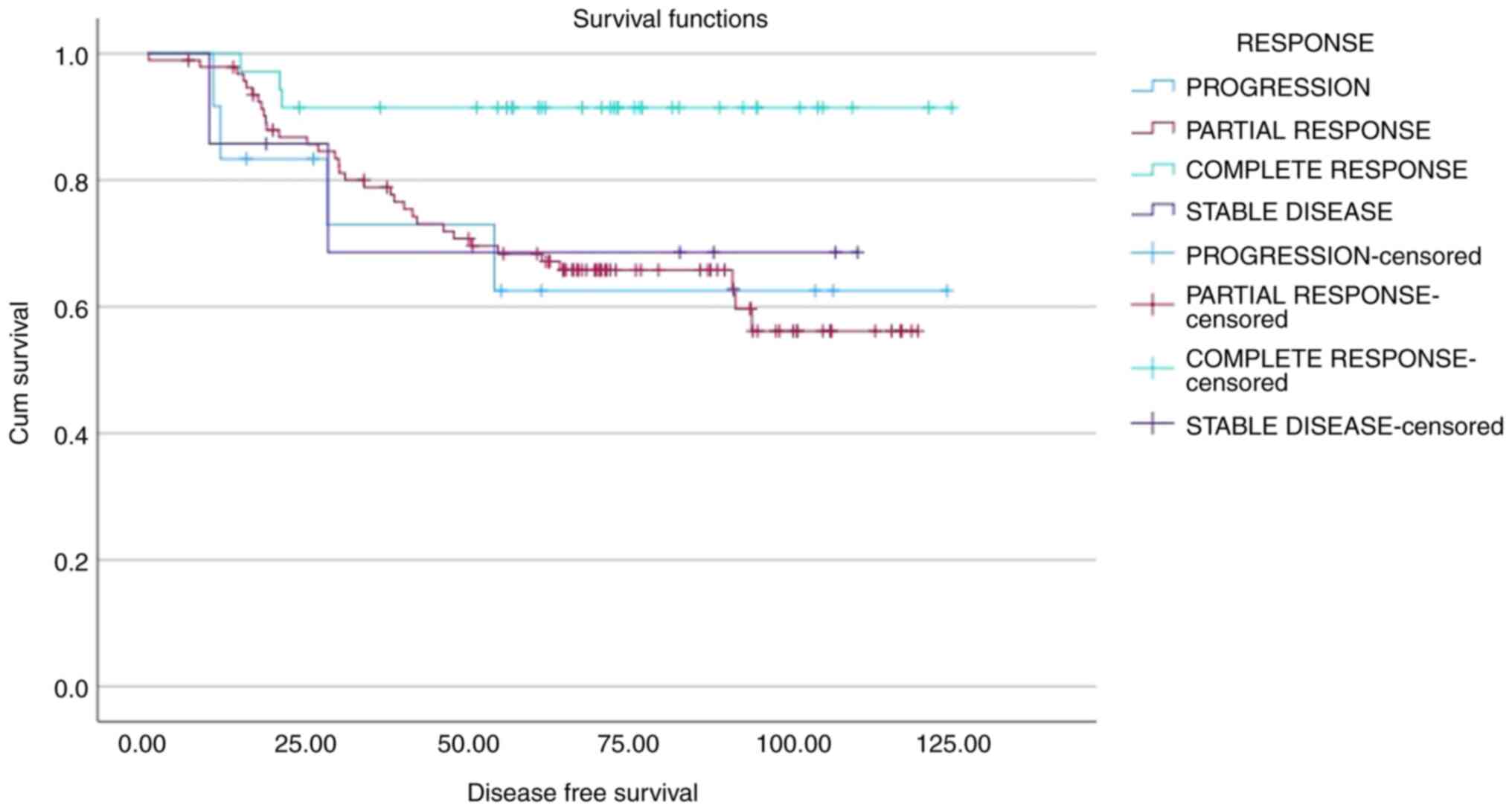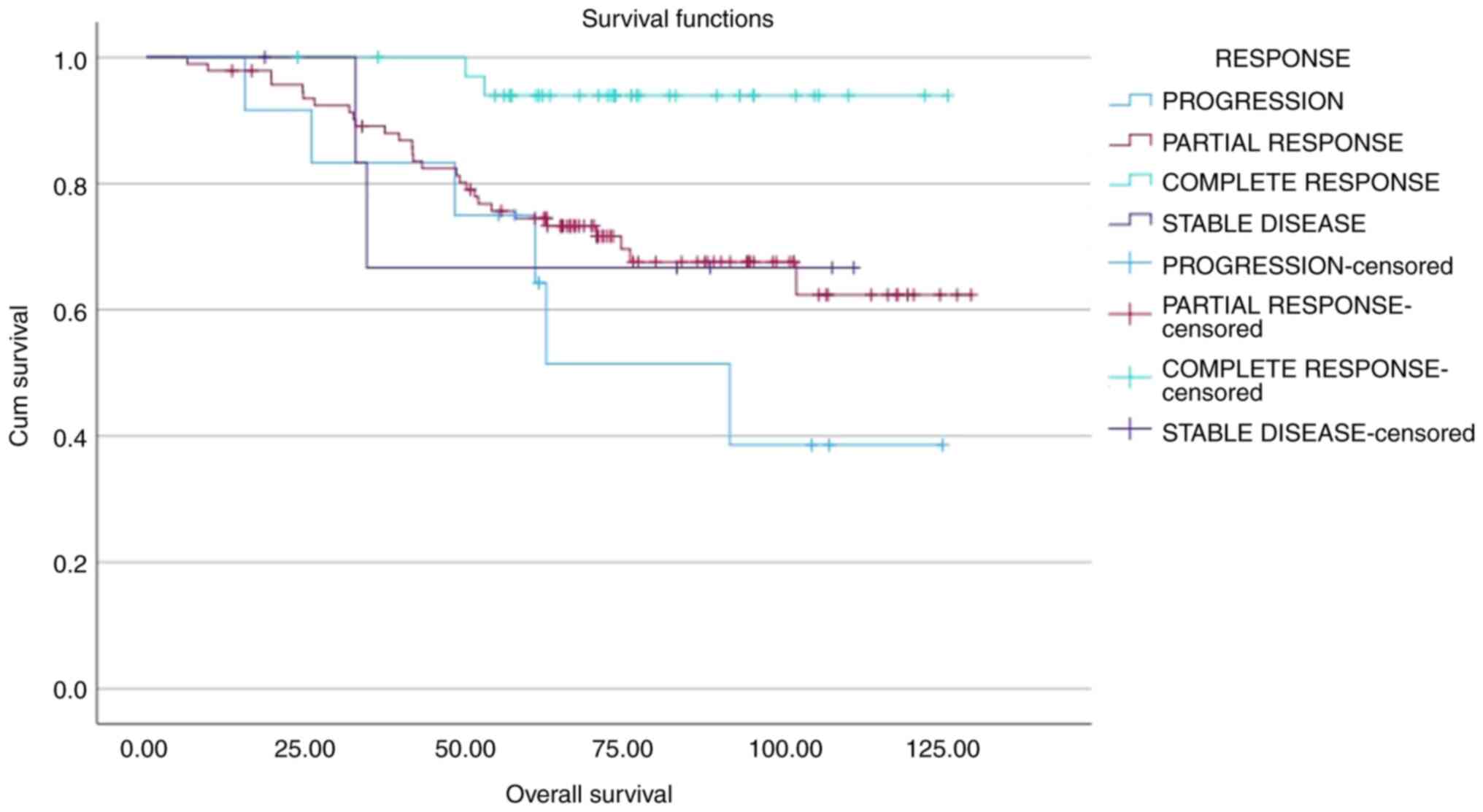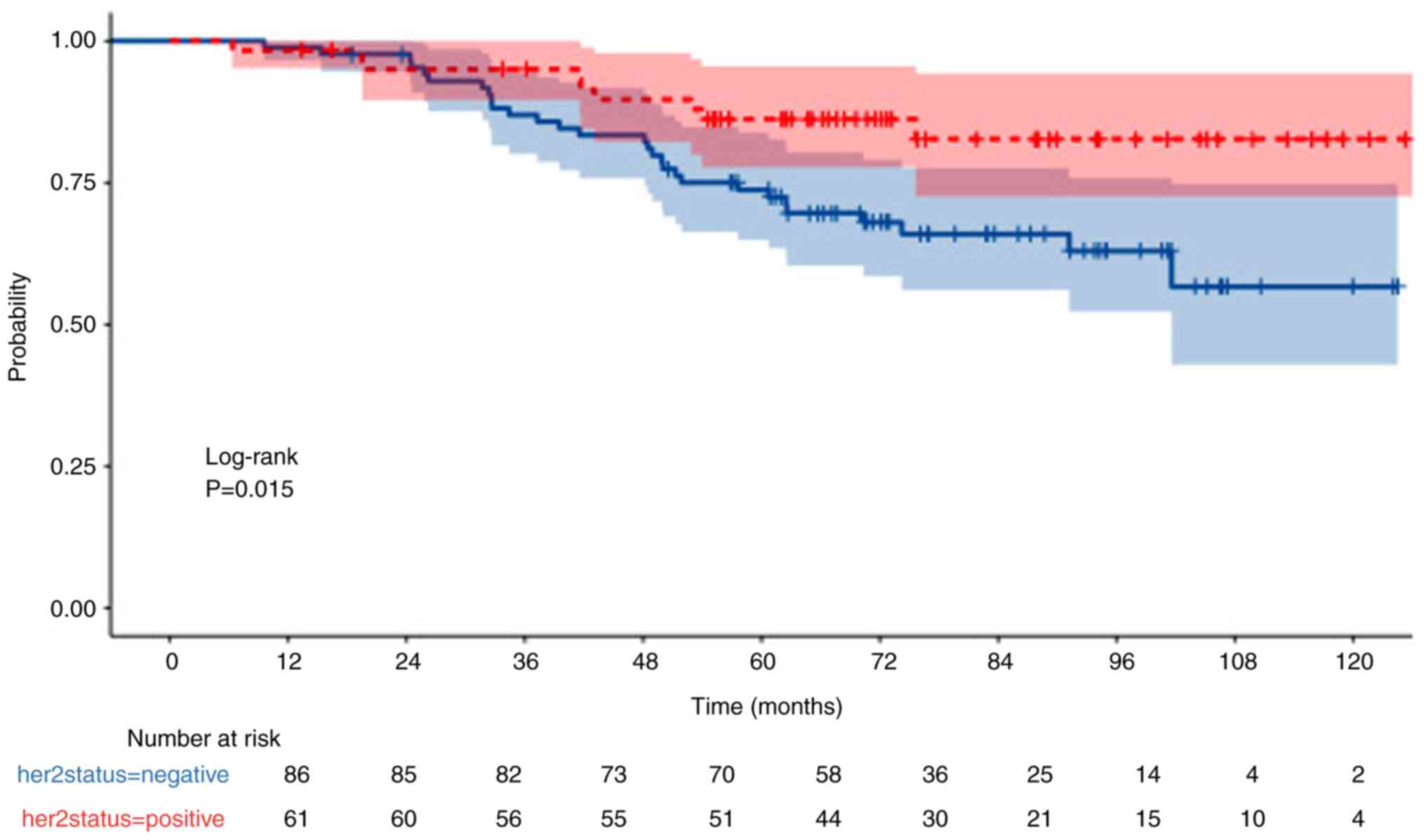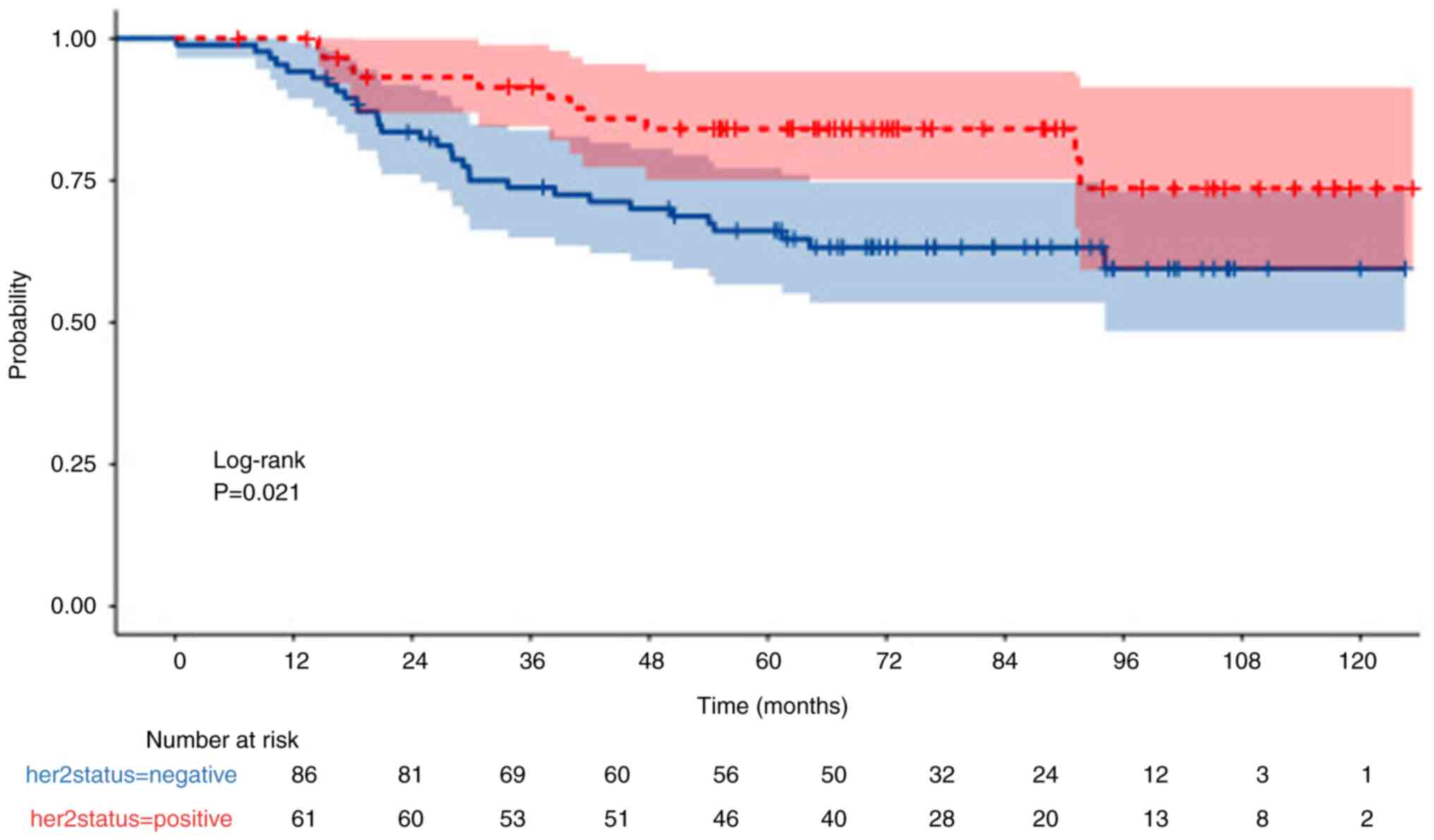|
1
|
Siegel RL, Miller KD, Wagle NS and Jemal
A: Cancer statistics, 2023. CA Cancer J Clin. 73:17–48. 2023.
View Article : Google Scholar : PubMed/NCBI
|
|
2
|
The International Agency for Research on
Cancer, . Breast Fact Sheet. 2020.
|
|
3
|
Urut DU, Karabulut D, Hereklioglu S,
Özdemir G, Cicin BA, Hacıoglu B, Süt N and Tunçbilek N: Diffusion
tensor imaging: Survival analysis prediction in breast cancer
patients. Radiologie (Heidelb). 64 (Suppl 1):S54–S59. 2024.
View Article : Google Scholar
|
|
4
|
van der Meer DJ, Kramer I, van Maaren MC,
van Diest PJ, C Linn S, Maduro JH, J A Strobbe L, Siesling S,
Schmidt MK and Voogd AC: Comprehensive trends in incidence,
treatment, survival and mortality of first primary invasive breast
cancer stratified by age, stage and receptor subtype in the
Netherlands between 1989 and 2017. Int J Cancer. 148:2289–2303.
2021. View Article : Google Scholar : PubMed/NCBI
|
|
5
|
Giuliano AE, Edge SB and Hortobagyi GN:
Eighth edition of the AJCC cancer staging manual: Breast cancer.
Ann Surg Oncol. 25:1783–1785. 2018. View Article : Google Scholar : PubMed/NCBI
|
|
6
|
Simon RM, Paik S and Hayes DF: Use of
archived specimens in evaluation of prognostic and predictive
biomarkers. J Natl Cancer Inst. 101:1446–1452. 2009. View Article : Google Scholar : PubMed/NCBI
|
|
7
|
Elston CW and Ellis IO: Pathological
prognostic factors in breast cancer. I. The value of histological
grade in breast cancer: Experience from a large study with
long-term follow-up. Histopathology. 19:403–410. 1991. View Article : Google Scholar : PubMed/NCBI
|
|
8
|
Rakha EA, El-Sayed ME, Lee AH, Elston CW,
Grainge MJ, Hodi Z, Blamey RW and Ellis IO: Prognostic significance
of Nottingham histologic grade in invasive breast carcinoma. J Clin
Oncol. 26:3153–3158. 2008. View Article : Google Scholar : PubMed/NCBI
|
|
9
|
Jeruss JS, Mittendorf EA, Tucker SL,
Gonzalez-Angulo AM, Buchholz TA, Sahin AA, Cormier JN, Buzdar AU,
Hortobagyi GN and Hunt KK: Staging of breast cancer in the
neoadjuvant setting. Cancer Res. 68:6477–6481. 2008. View Article : Google Scholar : PubMed/NCBI
|
|
10
|
Mittendorf EA, Jeruss JS, Tucker SL, Kolli
A, Newman LA, Gonzalez-Angulo AM, Buchholz TA, Sahin AA, Cormier
JN, Buzdar AU, et al: Validation of a novel staging system for
disease-specific survival in patients with breast cancer treated
with neoadjuvant chemotherapy. J Clin Oncol. 29:1956–1962. 2011.
View Article : Google Scholar : PubMed/NCBI
|
|
11
|
Pollak KI, Arnold RM, Jeffreys AS,
Alexander SC, Olsen MK, Abernethy AP, Sugg Skinner C, Rodriguez KL
and Tulsky JA: Oncologist communication about emotion during visits
with patients with advanced cancer. J Clin Oncol. 25:5748–5752.
2007. View Article : Google Scholar : PubMed/NCBI
|
|
12
|
Altman DG and Royston P: What do we mean
by validating a prognostic model? Stat Med. 19:453–473. 2000.
View Article : Google Scholar : PubMed/NCBI
|
|
13
|
Hortobagyi GN, Edge SB and Giuliano A: New
and important changes in the TNM staging system for breast cancer.
Am Soc Clin Oncol Educ Book. 38:457–467. 2018. View Article : Google Scholar : PubMed/NCBI
|
|
14
|
Febbo PG, Ladanyi M, Aldape KD, De Marzo
AM, Hammond ME, Hayes DF, Iafrate AJ, Kelley RK, Marcucci G, Ogino
S, et al: NCCN Task Force report: Evaluating the clinical utility
of tumor markers in oncology. J Natl Compr Canc Netw. 9 (Suppl
5):S1–S32. 2011. View Article : Google Scholar
|
|
15
|
Phung MT, Tin Tin S and Elwood JM:
Prognostic models for breast cancer: A systematic review. BMC
Cancer. 19:2302019. View Article : Google Scholar : PubMed/NCBI
|
|
16
|
Clift AK, Dodwell D, Lord S, Petrou S,
Brady M, Collins GS and Hippisley-Cox J: Development and
internal-external validation of statistical and machine learning
models for breast cancer prognostication: Cohort study. BMJ.
381:e0738002023. View Article : Google Scholar : PubMed/NCBI
|
|
17
|
Rakha EA, Soria D, Green AR, Lemetre C,
Powe DG, Nolan CC, Garibaldi JM, Ball G and Ellis IO: Nottingham
prognostic index plus (NPI+): A modern clinical decision making
tool in breast cancer. Br J Cancer. 110:1688–1697. 2014. View Article : Google Scholar : PubMed/NCBI
|
|
18
|
Gray E, Donten A, Payne K and Hall PS:
Survival estimates stratified by the Nottingham Prognostic Index
for early breast cancer: A systematic review and meta-analysis of
observational studies. Syst Rev. 7:1422018. View Article : Google Scholar : PubMed/NCBI
|
|
19
|
Hawkins RA, Tesdale AL, Prescott RJ,
Forster T, McIntyre MA, Baker P, Jack WJ, Chetty U, Dixon JM,
Killen ME, et al: Outcome after extended follow-up in a prospective
study of operable breast cancer: Key factors and a prognostic
index. Br J Cancer. 87:8–14. 2002. View Article : Google Scholar : PubMed/NCBI
|
|
20
|
Vila J, Teshome M, Tucker SL, Woodward WA,
Chavez-MacGregor M, Hunt KK and Mittendorf EA: Combining clinical
and pathologic staging variables has prognostic value in predicting
Local-regional recurrence following neoadjuvant chemotherapy for
breast cancer. Ann Surg. 265:574–580. 2017. View Article : Google Scholar : PubMed/NCBI
|
|
21
|
Marmé F, Solbach C, Michel L, Schneeweiss
A, Blohmer JU, Huober J, Fasching PA, Jackisch C, Nekljudova V,
Link T, et al: Utility of the CPS+ EG scoring system in
triple-negative breast cancer treated with neoadjuvant
chemotherapy. Eur J Cancer. 153:203–212. 2021. View Article : Google Scholar : PubMed/NCBI
|
|
22
|
Song R, Lee DE, Lee EG, Lee S, Kang HS,
Han JH, Lee KS, Sim SH, Chae H, Kwon Y, et al: Clinicopathological
factors associated with oncotype DX risk group in patients with
ER+/HER2-Breast cancer. Cancers (Basel). 15:44512023. View Article : Google Scholar : PubMed/NCBI
|
|
23
|
Yabroff KR, Sylvia Shi K, Zhao J, Freedman
AN, Zheng Z, Nogueira L and de Moor JS: Importance of patient
health ınsurance coverage and Out-of-Pocket costs for genomic
testing in oncologists' Treatment decisions. JCO Oncol Pract.
20:429–437. 2024. View Article : Google Scholar : PubMed/NCBI
|
|
24
|
Taylor C, McGale P, Probert J, Broggio J,
Charman J, Darby SC, Kerr AJ, Whelan T, Cutter DJ, Mannu G and
Dodwell D: Breast cancer mortality in 500 000 women with early
invasive breast cancer diagnosed in England, 1993–2015: Population
based observational cohort study. BMJ. 381:e0746842023. View Article : Google Scholar : PubMed/NCBI
|
|
25
|
Blows FM, Driver KE, Schmidt MK, Broeks A,
van Leeuwen FE, Wesseling J, Cheang MC, Gelmon K, Nielsen TO,
Blomqvist C, et al: Subtyping of breast cancer by
immunohistochemistry to investigate a relationship between subtype
and short and long term survival: A collaborative analysis of data
for 10,159 cases from 12 studies. PLoS Med. 7:e10002792010.
View Article : Google Scholar : PubMed/NCBI
|
|
26
|
Kulturoglu MO, Aydın F, Aslan F, Sagdic
MF, Coskun O and Dogan L: The rush to evaluate response at the end
of treatment in breast cancer patients who received neoadjuvant
treatment: Which tests are effective in the selection of surgical
technique? Asian Pac J Cancer Prev. 26:619–624. 2025. View Article : Google Scholar : PubMed/NCBI
|
|
27
|
Cortazar P, Zhang L, Untch M, Mehta K,
Costantino JP, Wolmark N, Bonnefoi H, Cameron D, Gianni L,
Valagussa P, et al: Pathological complete response and long-term
clinical benefit in breast cancer: The CTNeoBC pooled analysis.
Lancet. 384:164–172. 2014. View Article : Google Scholar : PubMed/NCBI
|
|
28
|
Tayebi A, TizMaghz A, Gorjizad M, Tavasol
A, Tajaddini A, Rashnoo F, Vakili K, Behmanesh M, Olamaeian F and
Ashoori M: Evaluating the effect of neoadjuvant chemotherapy on
surgical outcomes in breast cancer patients: A systematic review
study. J Chemother. February 28;(Epub ahead of print). PubMed/NCBI
|
|
29
|
Roussot N, Constantin G, Desmoulins I,
Bergeron A, Arnould L, Beltjens F, Mayeur D, Kaderbhai C, Hennequin
A, Jankowski C, et al: Prognostic stratification ability of the
CPS+EG scoring system in HER2-low and HER2-zero early breast cancer
treated with neoadjuvant chemotherapy. Eur J Cancer.
202:1140372024. View Article : Google Scholar : PubMed/NCBI
|
|
30
|
von Minckwitz G, Untch M, Blohmer JU,
Costa SD, Eidtmann H, Fasching PA, Gerber B, Eiermann W, Hilfrich
J, Huober J, et al: Definition and impact of pathologic complete
response on prognosis after neoadjuvant chemotherapy in various
intrinsic breast cancer subtypes. J Clin Oncol. 30:1796–804. 2012.
View Article : Google Scholar : PubMed/NCBI
|
|
31
|
Rhodes S, Miller DG and Chino F: ‘When
Less is More’: Paradigm shifts in radiation treatment for
Early-stage breast cancer. Curr Treat Options Oncol. 25:1495–1505.
2024. View Article : Google Scholar : PubMed/NCBI
|
|
32
|
Michel LL, Sommer L, González Silos R,
Lorenzo Bermejo J, von Au A, Seitz J, Hennigs A, Smetanay K,
Golatta M, Heil J, et al: Locoregional risk assessment after
neoadjuvant chemotherapy in patients with primary breast cancer:
Clinical utility of the CPS + EG score. Breast Cancer Res Treat.
177:437–446. 2019. View Article : Google Scholar : PubMed/NCBI
|
|
33
|
Fredholm H, Eaker S, Frisell J, Holmberg
L, Fredriksson I and Lindman H: Breast cancer in young women: Poor
survival despite intensive treatment. PLoS One. 4:e76952009.
View Article : Google Scholar : PubMed/NCBI
|
|
34
|
Bastiaannet E, Liefers GJ, de Craen AJ,
Kuppen PJ, van de Water W, Portielje JE, van der Geest LG,
Janssen-Heijnen ML, Dekkers OM, van de Velde CJ and Westendorp RG:
Breast cancer in elderly compared to younger patients in the
Netherlands: Stage at diagnosis, treatment and survival in 127,805
unselected patients. Breast Cancer Res Treat. 124:801–807. 2010.
View Article : Google Scholar : PubMed/NCBI
|















